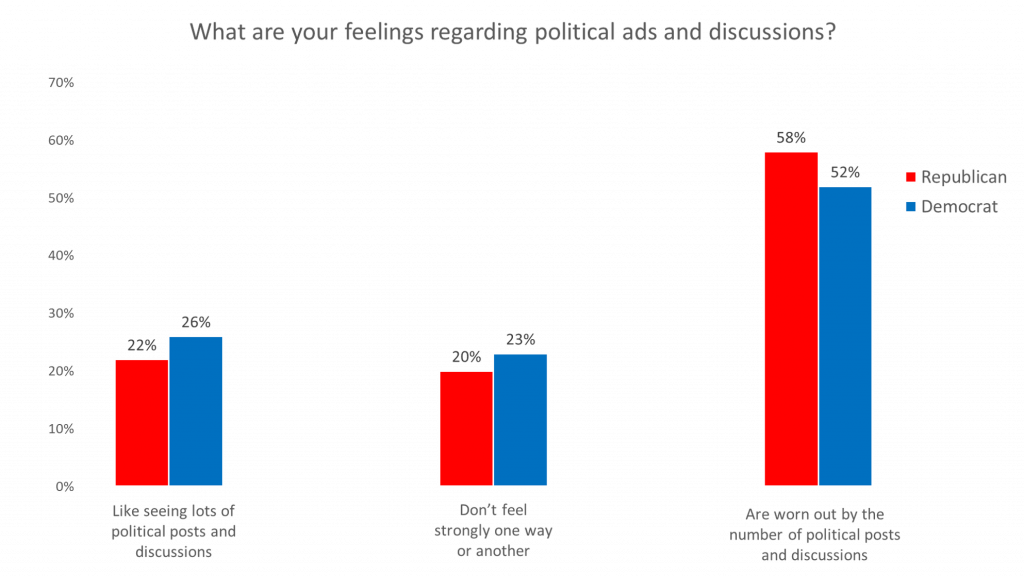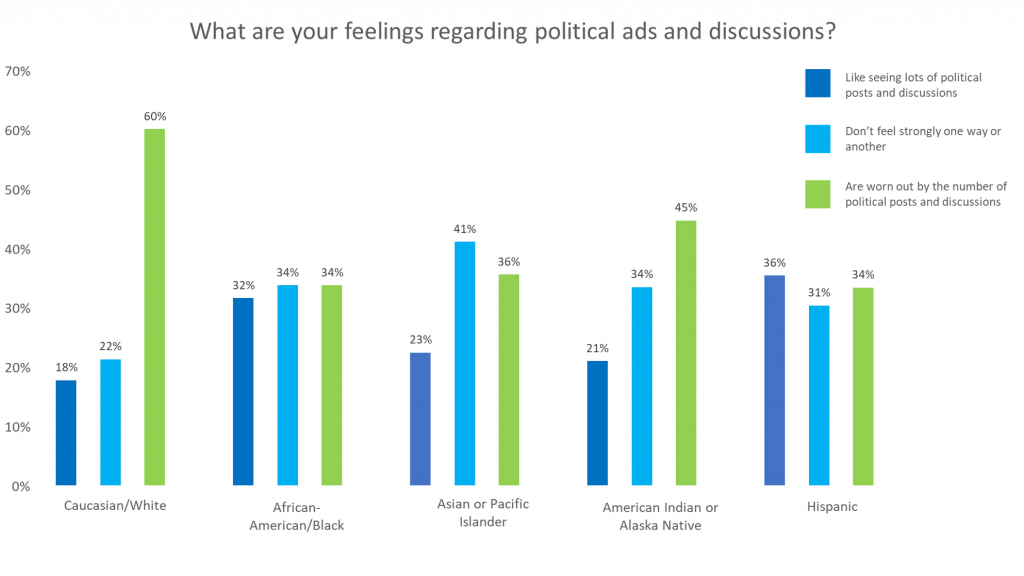
The Research Surge: How to Best Navigate Current Sample Feasibility Challenges
November 19, 2020
Intellicast S3E50 – Vaccines, Pandemic Budgets, and More!
December 3, 2020Political Ads and Discussions – Have We Seen Enough?

Group of people screaming in megaphones at scared guy
This election season had been a topic of conversation for the past few months and has continued to be even after the election. Political ads and discussions flooded social media platforms, TV networks, and streaming platforms leading up to November 3rd. In this latest research on research blog, we look at public opinion regarding political ads and discussions across different demographics.
When looking at respondents by age, those age 25-34 like seeing lots of political posts and discussions the most. Respondents age 55-64 are the most likely to be worn out by political posts and discussions. Respondents age 35-44 are the most likely to not feel strongly either way.

Males like seeing lots of political posts and discussions more than females. Females are more likely to be worn out by political posts and discussions than males.

When looking at respondents by political party, Democrats are more likely to enjoy seeing lots of political posts and discussions than Republicans. Republicans are more likely to be worn out by them. Democrats are more likely to not feel strongly either way.

Hispanic respondents like seeing lots of political posts and discussions the most. Caucasian/White respondents are most likely to be worn out by the number of political posts and discussions. Asian or Pacific Islanders are most likely to not feel strongly either way.

This year has shown us how consumer attitudes and behaviors can change over time and are different across all demographics. That’s why we use our intentional and controlled method of sample blending, Intelliblend™, to ensure that we get the most representative sample.
If you’re interested in learning more about this year’s Research-on-Research, which includes further research on the election and public opinion, you can download our Sample Landscape: 2020 Edition or check out our other recent blog about the election, Stress Levels and the 2020 Election.




